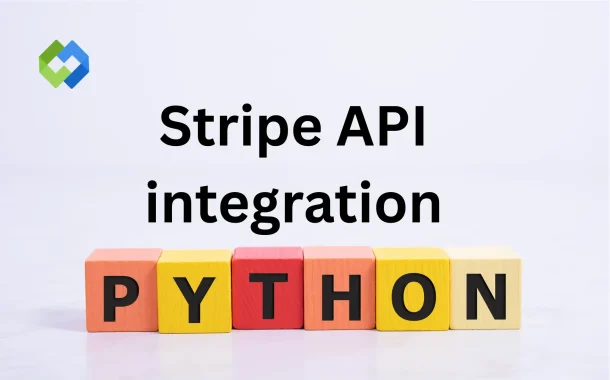Using Stripe for payment integration saves time and reduces technical work. It supports multiple currencies, making it great for international use. When used with Python, integration becomes even easier because Python has clear syntax and strong libraries. Developers can quickly connect their code with Stripe’s features to handle payments, manage users, and track transactions.
Table of Contents
Table of Contents
Setting Up Your Stripe Account
Creating a Stripe Account
To begin, visit the official Stripe website and sign up with your email address and password. Once you create your account, Stripe will ask for your business details such as name, address, and bank information. These details are required for verification and secure payment handling. After completing the setup, you’ll get access to the Stripe dashboard where you can manage all payment tools and account settings.
Accessing the Dashboard
The dashboard is your main control center for Stripe. From here, you can view transactions, manage payouts, and configure payment options. It gives you a clear overview of your business activity and payment performance. Take some time to explore it before moving on to integration.
Retrieving API Keys
Inside the dashboard, you’ll find your API keys, which are needed to connect Stripe with your Python project. Stripe provides test keys for testing and live keys for real transactions. It’s best to start in test mode to ensure everything works perfectly before switching to live mode.
Installing Stripe Python Library
Requirements Before Installation
Before installing the Stripe Python library, make sure you have Python and pip already installed on your system. Python should be version 3.6 or higher for better compatibility. You can check your version by running python --version in your terminal. It’s also a good idea to create a virtual environment before installation to keep your project files clean and organized.
How to Install Using pip
Installing the Stripe library is simple. Open your terminal or command prompt and type pip install stripe. This command will download and install the latest version of the Stripe package from Python’s official repository. Once the process finishes, the Stripe library will be ready to use in your project for making API calls.
Verifying Installation Success
To confirm the installation, open a Python shell and type import stripe. If you don’t see any error messages, it means the installation was successful. You can also check the installed version by running pip show stripe. This step ensures the library is properly installed and ready for integration with your Stripe account.
Configuring API Keys in Your Python Project
Adding API Keys Securely
After installing the Stripe library, you need to connect it with your Stripe account using API keys. These keys allow your Python project to communicate with Stripe’s servers. You can find them in your Stripe dashboard under the Developers → API keys section. Stripe gives two types of keys — Publishable key for client-side use and Secret key for server-side operations. Never share your secret key publicly, as it gives full access to your payment system.
Using Environment Variables
To keep your keys safe, store them in environment variables instead of writing them directly in your code. This helps prevent accidental exposure, especially when you share your code or upload it online. You can use the os module in Python to access these variables securely when your project runs.
Testing Key Authentication
Once your keys are set, test the connection to make sure everything is working. Run a small Python script that imports Stripe and prints your account details using the test key. If it responds correctly, your API keys are properly configured. This step confirms your setup is ready for processing test payments.
Creating a Payment Intent
A payment intent is the first step in collecting money from a customer. It represents the full process of a payment, from when it starts until it is confirmed. Stripe uses payment intents to make online transactions secure and well-organized. Each time a customer makes a payment, Stripe creates a unique payment intent that helps track the progress. This system ensures that every transaction is handled safely and can be reviewed anytime in your Stripe dashboard.
To create a payment intent in Python, you need to use the Stripe library. You can set details like the amount, currency, and payment method in your code. When the request is sent, Stripe generates a payment intent ID that helps you manage and confirm the transaction later. This makes it easier to keep track of each payment during the checkout process.
While creating a payment intent, it is very important to handle customer information securely. Never save card numbers or private details directly in your database. Instead, use Stripe’s secure tokens or checkout tools to manage payment information safely. This method follows payment security standards and keeps customers’ financial data protected.
Managing Webhooks for Real-Time Updates
Webhooks are an important part of Stripe integration because they help you get real-time updates about payment events. When something happens in your Stripe account, such as a successful payment or a refund, Stripe sends a notification to your webhook endpoint. This endpoint is a URL in your application that receives and processes the event. Webhooks help your system stay updated automatically without manually checking the dashboard.
Setting Up Webhooks in Stripe
To set up webhooks, go to your Stripe dashboard and open the Developers section. From there, you can add a new webhook endpoint by entering your app’s URL. You can choose which events to receive updates for, like payment success, failure, or subscription renewal. Stripe then sends event data in JSON format whenever one of these actions occurs.
Handling Webhook Events in Python
In your Python project, you can handle webhooks using a simple route that listens for incoming events. When Stripe sends an event, your code can read the data and perform actions, like updating a payment status or sending a confirmation email to the user. Make sure to verify the webhook signature to confirm that the request is genuinely from Stripe. This step improves security and prevents fake requests.
Testing Webhooks
Testing your webhook setup is important. Stripe allows you to send test events from the dashboard to your endpoint. This helps confirm that your Python code correctly receives and processes the data. Once everything works smoothly, you can switch from test mode to live mode and start handling real payment notifications safely.
Testing Stripe Integration in Python
Using Stripe Test Mode
Before going live, it is important to test your Stripe integration in Python. Stripe provides a test mode that allows you to simulate payments without using real money. You can use test API keys and test card numbers provided by Stripe to check how your code handles different payment scenarios. This ensures your integration works correctly before customers start making real transactions.
Common Test Scenarios
During testing, you should simulate both successful and failed payments. This includes transactions with valid cards, declined cards, and payments that require authentication. Testing different scenarios helps you verify that your Python code can handle all types of responses from Stripe. It also ensures that your system updates payment status correctly and triggers any notifications or actions you have set up.
Validating Successful Transactions
After running tests, check your Stripe dashboard to confirm that all transactions appear as expected. Make sure payment intents are created, confirmed, and completed correctly. Testing thoroughly helps catch errors early and ensures that when you switch to live mode, your integration runs smoothly, providing a secure and reliable payment experience for your users.
Conclusion
Integrating Stripe API with Python makes online payments simple and secure. By setting up your account, installing the Stripe library, and configuring API keys, you can start accepting payments quickly. Using payment intents and webhooks helps manage transactions and get real-time updates automatically. Testing your integration with Stripe’s test mode ensures everything works correctly before going live.
Following these steps carefully keeps customer payments safe and your system reliable. Python makes the process easier with clear code and strong libraries. Once set up, you can handle payments smoothly and focus on growing your business without worrying about payment issues.














